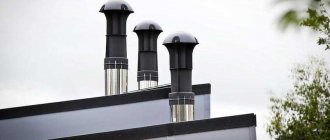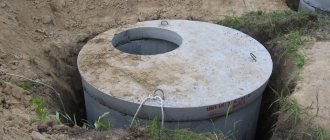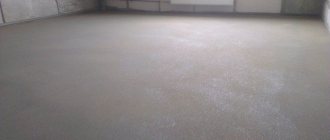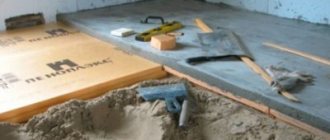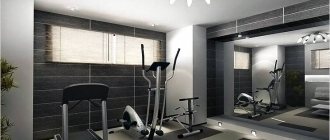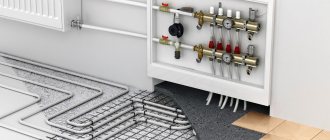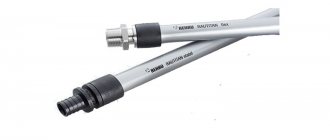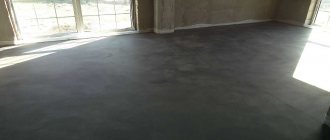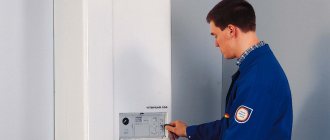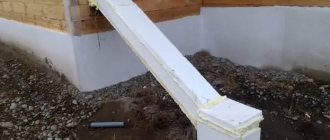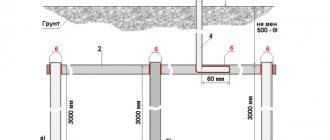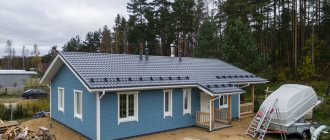Diffusion membranes
The most expensive material used for durable and high-quality vapor barrier is diffusion membranes. People called them “breathing”.
In such membranes, regulation of the moisture level is achieved by allowing air to pass through on one or both sides, so the membranes come in single-sided and double-sided varieties.
When laying a one-sided membrane, it is important not to confuse the side that is applied to the insulation. This aspect is not taken into account if a double-sided membrane is used
In terms of its microstructure, the membrane is a non-woven material made from artificial fibers that provides a significant coefficient of vapor permeability. The membrane is classified by the number of layers - there are one, two or three layers. In addition, there may be an additional anti-condensation layer, which is responsible for the accumulation of moisture and its further evaporation.
Among the breathable membranes, the most popular and versatile are multilayer smart membranes that allow you to regulate vapor exchange, taking into account the level of humidity and room temperature. Such membranes simultaneously have the qualities of waterproofing, vapor barrier and thermal insulation.
In addition, when using breathable diffusion membranes, there is no need to create a gap between the membrane and the insulation, which saves space and greatly simplifies installation work.
But the material also has a drawback - its high price. However, the simplicity of installation work, durability and reliability of the vapor barrier make it possible to recoup its cost. The use of diffusion membranes provides durable and reliable protection of the floor from moisture, increasing the performance of the structure.
Definition and Functions
Vapor barrier film is a special material that is necessarily included in the roofing pie, which has a pronounced vapor blocking effect. According to the well-known law of convection, warmer and more humid air, abundantly released during human activity, rises up into the under-roof space, then it settles in the form of condensation on the roof rafter frame, leading to dampening of the insulation and rotting of the wooden structural elements. The vapor barrier film as part of the roof performs the following functions:
- Preservation of the performance qualities of the insulation. Installing a vapor barrier prevents the accumulation of condensation inside the thermal insulation material, which significantly reduces the effectiveness of insulation.
- Extending the service life of roofing coverings. Roofing materials are much better protected from moisture and corrosion from the outside. Installing a vapor barrier solves the problem of condensation affecting the lower surface of the roof covering.
- Protection of the wooden roof frame from rotting. A properly installed vapor barrier film prevents the roof rafters from getting wet due to condensation, which results in wood rotting.
Note! Vapor blocking film “works” effectively only if it is correctly selected for climatic conditions, roof structure, and type of roofing material. An unsuitable vapor barrier will not only be of no benefit, but will also intensify the process of condensation.
Vapor barrier for floors in a wooden house
In a wooden house, the ground floor floors are prepared on the ground. The design of the floor is very simple and is a multi-layer cake of the following type: “dirty” floor, wood blocks, hydro-, steam- and thermal insulation, finished floor and floor covering. The floor structure itself is placed on supporting brick pillars or concrete. Between the wooden floor and the ground there is an underground space that has its own ventilation.
It is recommended to create a vapor barrier for a wooden floor during the construction stage of a house. Of course, sometimes it is necessary to do a comprehensive repair of an already finished one, but in any case, the creation of a vapor barrier begins with the preparatory stage.
Preparation work
If, for example, a house is being built from scratch, then there are fewer worries. The very first thing is that all floorboards are made of wood.
should be treated with a special composition against rotting, fungi and insect pests. This is especially true for the cross beams and base floor, since they are closest to the ground. Secondly, you should replace the wood blocks and refine the “dirty” floor, on which the steam and thermal insulation will lie.
In case of major repairs or development of a vapor barrier for an already finished wooden floor
you need to do the following. The very first thing is to remove the old floor covering and finished floor, remove the thermal insulation and what previously could have been a vapor barrier. Second, check the condition of the base floor and cross beams for rotten or sagging boards. If such are found, then it will be necessary to completely or partially replace them and treat the wood blocks and the “dirty” floor with protective agents. Only after they have been repaired and put in place, we begin laying the vapor barrier.
Laying vapor barrier on the floor
All work on laying vapor barriers is a primitive set of sequential actions; they do not require any special skills or knowledge. For vapor barrier of wooden floors, film materials are usually used, one of the light representatives of which is vapor barrier
Izospan B floors and Izospan membrane fabric.
We lay the Izospan vapor barrier on the “dirty” floor, gluing the joints with specialized tape
We lay the Izospan vapor barrier on the supporting frame of the base floor, making sure that the sheets overlap one on one, and the overlap width is 15 - 20 cm. To fasten the Izospan vapor barrier, you can use zinc nails or a specialized construction stapler, but many manufacturers of “breathing” vapor barriers films and films, it is recommended to use specialized adhesive tape. Therefore, when purchasing a vapor barrier, you need to clarify the method of its fastening. A positive quality of the tape is the ability to create a solid coating without cracks or joints. To do this, we simply glue the overlapping areas.
Important! When laying the vapor barrier, make sure that it is laid with the required side facing the thermal insulation. Otherwise, moisture will accumulate and spoil the heat insulator.
We lay the Izospan vapor barrier on top of the heat insulator, seal all the cracks and joints with tape
We lay a thermal insulation layer on top of the vapor barrier. This can be mineral wool, polystyrene foam or any other material for thermal insulation. The main thing is that it fits tightly to the cross beams, and there are no gaps or cracks between them. We again lay a vapor barrier layer on top of the heat insulator, making sure that the sheets overlap. After this, we glue the joints and begin installing the finished floor and floor covering.
Wood flooring is very demanding to work with and puts forward strict requirements for its own protection from the negative effects of a variety of factors. First of all, this concerns the level of moisture, since wood is very sensitive to it. However, thanks to today's technologies and people's desire to create reliable and durable structures, hydro- and vapor barrier materials have emerged. They are easy to install and perfectly protect wood from damage, and their scope of use also extends to roofs and walls of wooden houses.
In the case of using foil vapor barrier, first of all, keep in mind the fundamental point: it should be laid with the metallized side up, so that heat is repelled into the room, and also lay it end-to-end, gluing it with aluminum-based tape.
Instructions for laying vapor barrier on the floor
Surface preparation
Before laying a vapor barrier on the floor, all wooden structural elements (joists, boards, bars) must be treated with antiseptic agents that will protect the wood from rotting.
If a vapor barrier is laid on an existing floor, you must first remove the finished floor boards and also remove all layers of previously made heat and vapor barrier. Then they remove debris, dirt and dust, carry out an antiseptic treatment of the wooden parts of the subfloor and install them in place.
Laying vapor barrier
Laying vapor barrier
The vapor barrier is placed in the gap between the joists. Before laying, the film must be cut into pieces so that it completely covers the vertical surfaces of the beam.
- The material is secured using a stapler in vertical sections in increments of 30-40 cm.
- Mineral wool or other selected insulation is laid on top of the film on the floor. We place the material very tightly so that there are no gaps between the slabs and at the junctions with the joists. The width of the insulation should be 20-50 mm less than the height of the log. This creates a ventilation gap between the heat insulator and the vapor barrier film.
- Double-sided tape is glued along the entire perimeter at a height of 2-3 cm from the floor. The protective layer is removed only from the side on which it is glued to the wall.
- A vapor barrier film is laid on top of the insulation. It is necessary that the pieces of material are approximately 5-6 cm larger than the space they cover.
- The top layer of vapor barrier must be laid across the joists. The edge of the film is fixed to the wall with tape, and the protective layer is removed from it.
- The film is stapled to the joists; it should sag slightly between the beams.
- The second sheet of vapor barrier is laid overlappingly on top of the laid film and glued with double-sided tape. All other sheets are laid similarly.
A counter-lattice is mounted on top of the vapor barrier, on which the finished floor is then laid.
By consistently following the instructions, you can install a vapor barrier yourself, but there are a number of nuances in this work that are known only to professionals.
carries out work on internal and external thermal insulation and vapor barrier of wooden houses. We accept applications from residents of Moscow and the region. The quality of our work has been tested over the years and is confirmed by positive customer reviews.
We are always in touch and waiting for your messages and calls, you will find our contact information on the “Contacts” page.
Calculate the cost of painting and insulating your home right now
Select types of work:
Select materials:
Do-it-yourself installation of floor vapor barrier in a wooden house
Most often, floors in a wooden house on the ground floor are made directly on the ground. Often a very primitive design is used, when a subfloor, joists are laid, then vapor barrier, thermal insulation, waterproofing, then the finished floor and only then the floor covering. This entire structure rests on support pillars made of brick, concrete or stone.
The underground, which is also the space between the wooden floor and the ground, is equipped with its own ventilation. Typically, vapor barrier of the floor is done during the construction stage. If the house is already in use and a major renovation is required with the obligatory reconstruction of the vapor barrier, then the installation begins with preparation.
Elements for fastening vapor barrier
To work you will need:
- vapor barrier film of the required type:
- stapler, screwdriver, painting knife;
- slats;
- screws, staples;
- workbench or stepladder.
To make the work easier, mark in advance with a colored marker the side of the film that will be facing the master.
If you understand the principles of installing a vapor barrier, then there is nothing complicated in its installation. All work is carried out in accordance with simple instructions.
Choosing a vapor barrier
In the process of arranging floors and other enclosing structures of a wooden house, it is necessary to select and buy one or another type of vapor barrier film. Considering the variety of types and offers on the market, a logical question arises: “which vapor barrier is better?” The answer to this cannot be unambiguous, since the correct choice is made only based on compliance with the following requirements:
- Firstly, the technical characteristics of the vapor barrier itself.
- Secondly, the operational characteristics of the room or fence where the vapor barrier will be installed, and their compliance with the previous paragraph.
- Thirdly, the cost of the film itself.
- Fourthly, the volume and price of installation work (it was previously mentioned that polyethylene/propylene films, according to the manual, require a ventilation gap, which complicates the installation of a wooden floor).
Practical installation recommendations
It is better to lay the floor on transverse beams - logs. In this case, the ceiling itself will have a spherical structure - a kind of motley “Napoleon pie”. The layer diagram looks like this:
1. Logs and cranial bars. The former are used as support and fastening beams for the main covering, as well as providing the required rigidity. The second is laid on both sides of each joist to ensure clearance of the subfloor boards or slabs from the ground/foundation.
2. Primary floor layer. Placed on the previously mentioned bars. It can be organized from boards or slabs (for example, OSB).
3. Waterproofing. The first barrier layer that prevents water from penetrating into the “pie” from below. The individual elements of the roll are laid with an overlap (150–200 mm), and the connection is made using double-sided tape.
4. Insulation. The most commonly used materials are mineral wool, fiberglass or polystyrene foam of the required thickness. Individual sheets are placed in such a way that there is no gap left between them and the joists.
5. Vapor barrier. The installation principle is the same as in the case of a hydraulic barrier.
6. Counter rails. Longitudinal wooden blocks 10–20 mm high, which provide a guaranteed ventilation gap. If a diffuse membrane film is used as the latter, then they do not need to be installed.
7. Wooden floor. This stage can be final or intermediate, if, for example, laying laminate flooring is planned.
Prices
The price of vapor barrier on the Russian market depends on its type, characteristics and regional features/rates:
| Manufacturer/region | Brand | Barrier type | Price, rubles |
| AMK-GROUP, Novosibirsk | TYVEK AIRGUARD REFLECTIVE | Membrane | 11 860 |
| ISOFLEX SOUTH, Sochi | NANOIZOL V | 1 000 | |
| KREPEZhCITY, Kazan | ONDUTIS R TERMO 25 | Reflective | 600 |
| LTK, St. Petersburg | MEGAIZOL V | Laminated polypropylene | 770 |
| GRATA, Kazan | ISOVEK AT 70 | 720 | |
| MTK, Novosibirsk | ROKWOOL | 920 | |
| RSL-INVEST, Novosibirsk | ISOSPAN V | Rough polypropylene | 1 000 |
Types of vapor barrier materials
In construction, various materials are used for waterproofing and vapor barrier:
- polyethylene and polypropylene film;
- breathable (diffuse) membranes;
- bitumen mastics;
- liquid rubber.
The last two types are suitable for concrete surfaces and are not used on wooden structures. Each of the listed types of waterproofing and vapor barrier has its own characteristics.
The most common and budget option for vapor barrier is polyethylene sheet. It comes in different thicknesses. Consists of 1-2 layers.
Manufacturers produce perforated and non-perforated polyethylene film. The first is used for waterproofing. It contains micro-holes with a higher degree of vapor permeability (Sd=1...2 m). In non-perforated products this indicator is lower (Sd=40...80 m). Because of this, it is used as a vapor barrier.
Modern development of polyethylene films for hydro- and vapor barriers - products with reflective aluminum coating. The vapor barrier ability of this type is higher than traditional samples. It is used to protect plank floors in rooms with elevated air temperatures and humidity exceeding optimal parameters: in kitchens. In bathrooms, saunas, baths.
The main disadvantage of polyethylene sheets is low strength. Any impact will cause them to break.
They are mounted with extreme caution, trying to avoid sharp corners and strong tensions. They have a short shelf life
A more durable and wear-resistant artificial material is propylene. It is similar to the previous option, but surpasses it in quality and performance characteristics when used as a hydro- and vapor barrier product for a wooden floor.
Polypropylene reinforced fabrics, in addition to the main synthetic layer, have a viscose-cellulose insert. It is she who absorbs a large amount of liquid and holds it to prevent the formation of drops. When the air temperature rises, the humidity level drops, and this layer dries out. To make the process happen faster, an effective ventilation system is created.
The main advantage of polypropylene products is a high degree of resistance to any weather conditions. They are strong and durable, affordable and quite easy to install. When using polypropylene sheets for hydro- and vapor barrier, the anti-condensation layer is turned towards the rough flooring boards. A ventilation gap is created between the insulation mats and the film.
The most expensive material for hydro-vapor barrier is breathable (diffuse) membranes. These are high-quality modern products with a high coefficient of vapor permeability. They have a special microstructure. The basis of this material is a non-woven fabric woven from synthetic fibers.
Breathable membranes come in 1-2-3 layers. They contain a special anti-condensation layer in which moisture accumulates and then evaporates. Multilayer products include smart membranes. They combine the properties of hydro-, heat- and vapor barrier, and have the ability to independently regulate steam exchange depending on the level of humidity and temperature.
A serious advantage of breathable membranes is the possibility of using them without a ventilation device. This property allows you to save space on the floor by making the ceiling higher. When using these products, there is no need to install additional insulation.
Diffuse membranes are a durable, wear-resistant material that reliably protects boards from moisture. It is expensive, but has a long shelf life and is easier to install.
To choose the right material for vapor barrier of a wooden floor, you should correlate the structural features, the design of the rough and final coating, and financial capabilities.
Main types of vapor barriers
A wooden house involves several areas where it would be good to install a vapor barrier. In addition to the floor covering under consideration, an additional barrier often has to be installed in basements, attics, and also in the presence of uninsulated ventilation and furnace ducts. Therefore, it is necessary to know what kind of vapor barrier there is and its applicability in each specific case. They can be divided into three main groups:
1. Painting room. It is a liquid or plastic mixture (bitumen, tar), which is applied to uninsulated metal surfaces (roofing, chimneys). The barrier prevents the formation of condensation, which causes the development of corrosion areas.
2. Film. Thin roll insulation made of dense or membrane materials (polyethylene, polypropylene). Most often used in private housing construction to create a vapor barrier for a wooden floor.
3. Antioxidant film. Used as a safety net, especially at ventilation outlets and chimneys on the roof.
Considering that the topic of the article is the vapor barrier of a wooden floor, we should dwell in detail on the second group. In practice, three main types of films are used:
1. Polyethylene. The most accessible and familiar type, successfully used in the construction of not only floors, but also greenhouses. Depending on the surface texture, these films can be smooth, perforated or aluminized. As a material, polyethylene has low strength, so you need to work with it carefully. As for the barrier properties directly, the best level of vapor barrier is provided by a laminated film - its permeability indicator is at the level of 200 m, whereas for a regular smooth film it is good if it reaches 60 m. It should also be noted that a two-layer barrier additionally retains heat inside the room.
2. Polypropylene. More durable material. The level of vapor permeability reaches 100 m. It is often also two-layer, one side of which is smooth, and the other is woven - a combination of viscose-cellulose fibers - or fleecy. This solution allows you to better retain moisture and evaporate it faster. A striking example is the film Izospan B and Rockwool.
3. Membrane. This is a modern type of vapor barrier, the cost of which, naturally, is higher than its analogues. Multilayer material regulates moisture concentration well, as a result of which there is no need for ventilation gaps during installation.
How to distinguish the inside from the outside
Photo. Izospan B at multiple magnification
If the manufacturer’s instructions are missing or do not contain the necessary information about which side of the film is considered internal, then you should independently determine this based on external factors. Please pay attention to the following points:
1. If the waterproofing film has a different color on both sides, then the light side of the isospan is laid against the insulation; 2.
The side of the waterproofing that faces the floor when rolled out is considered internal and should face the insulation; 3.
The outer side is made fleecy so as not to allow moisture to pass through, and the inner side is smooth and is laid towards the insulation.
Correctly laying the film on the insulation
So which side should the waterproofing be laid to the insulation? If you are using a film, one side of which will be smooth and the other rough, then place the smooth side on the insulation, and the rough side up towards the floor covering.
In this case, the steam will not penetrate down to the insulation, but will remain at the top, and if there is effective ventilation of the underground space, it will quickly evaporate. If you use foil films, then lay them with the aluminum side up. It will also not allow steam to pass through and will reflect thermal energy.
If you used polypropylene film, then lay it with the laminated side down and the wicker side up.
But there are also exceptions. For example, a material such as Izospan V is very popular today. Which side of the waterproofing is laid against the insulation if it is used? It's the other way around, i.e.
We place the rough side on the insulation, and the smooth side upward, towards the floor covering.
In this regard, we recommend that, even after reading this material, you always carefully study the instructions of their manufacturers.
In addition, do not forget about the main purpose of the films listed above - to prevent steam from penetrating into the insulation. This means that they must be laid between the finished floor and the insulation.
At the same time, we must not forget that steam can penetrate from below, through the subfloor or interfloor ceilings, which means that another, lower layer of vapor barrier, on which the insulation is laid, will be quite relevant.
The latter option is especially relevant when it comes to the first floors of wooden houses, in which the floors are laid on the ground or are located above a damp basement.
Roof insulation
According to the physical laws of convection, warm air from living quarters, rising upward, carries priceless heat with it to the roof. Therefore, together with hydro- and vapor barrier, insulation is an integral part of the “roofing cake”.
With proper roof insulation, a comfortable thermal regime of the building will be maintained, which will ensure the durability of all structures. And so that the insulating layer does not lose its thermal insulation properties, it must remain dry and voluminous.
Insulation material
Any of the known materials with high thermal insulation properties can be used as insulation:
- Mineral wool
- Glass wool
- Styrofoam
- Polyurethane foam
- Foam glass
- Expanded clay, etc.
Installation of hydro-vapor barrier for floors in a wooden house
Vapor barrier in a wooden house is an important condition for its safety. Therefore, we must do it according to all the rules.
Wooden floors are a complex structure consisting of several layers. It is installed at the stage of erecting the foundation and the first crown. Then logs are installed - thick beams that create a frame for the rough flooring and subsequent layers of hydro-, vapor and thermal insulation.
- Boards of the first level are treated with a special compound that prevents them from rotting, fungal attack and damage by insects.
- A vapor barrier sheet is laid on clean, smooth rough floorboards. There is no need to tighten it. This can damage the material and compromise its integrity. He should lie down freely.
Attention! When laying out a vapor barrier sheet, be sure to ensure the correct placement of the outer and inner layers. This information is contained in the accompanying instructions for use and special icons on the canvases themselves.
- When the products are laid out, the joints between the individual fragments are glued together with construction tape.
Important! Vapor barrier sheets are laid with an overlap of 15-20 cm so that unprotected gaps do not form
- The hydro-vapor barrier is secured with staples using a construction (furniture) stapler or galvanized nails with wide heads. Modern products, for example, diffuse membranes, are attached to special double-sided adhesive tapes. Thanks to them, the canvas is not damaged, joints and cracks are not formed.
- Insulation (mats or rolled sheets) is tightly placed on top of the hydro-vapor barrier layer. Then the material is again laid to protect the structure from moisture.
- Lastly, the finishing coating - boards - is installed.
Installing a hydro-vapor barrier sheet is a simple task and can be done with your own hands in a short time. The main thing is to carry out the work correctly, in compliance with technological features. Then the wooden floor will last a long time.
Views: 1,362
We also advise you to read:
Sanding a wooden floor - how to do it yourself Soundproofing a wooden floor - ways to solve the problem
Replacing an old wooden floor Do-it-yourself insulation of a country floor Do-it-yourself screed for heated floors - instructions Do-it-yourself floor insulation in a wooden house
Do-it-yourself floor screed in an apartment - how to do it, video Do-it-yourself floor insulation - concrete and wooden floors
Vote, did you like the article?
Any homeowner spends a lot of effort to create comfortable living conditions for his family.
This is maintaining a constant temperature in the home, ensuring a flow of fresh air, and humidity within normal limits. All life activity of any living creature is accompanied by the release of heat and steam.
Wet cleaning and washing, showering and bathing, cooking, boiling water, and even breathing - all this is a source of steam accumulated in the room. Increased humidity leads to the formation of condensation on various surfaces indoors.
Moisture penetrating deep into the insulation and into the structure of the floor in a wooden house has a negative effect on them and contributes to their deterioration and even destruction. The materials used for construction become moldy. Fungus and areas of rotting form on them. In addition, high humidity does not have the best effect on the well-being and health of people living indoors.
To avoid damage and deterioration of individual floor elements, a special vapor barrier layer is used. Its functional purpose is to prevent the harmful effects of moisture. At the same time, it does not interfere with air circulation; it calmly goes outside. This technique allows floor structures not to lose their working qualities and ensures their long service life.
Recommendations for vapor barrier of frame structures
It is important to understand that to vapor barrier the walls of a frame house, you first need to install the membrane on the desired side and secure it to the racks using a construction stapler. The resulting joints should be glued with tape or a layer of mastic.
In some cases, a vapor barrier may not be required for frame walls. This usually happens when using polyurethane foam or ecowool as insulation. However, in this case, high-quality ventilation of the facades must be organized.
If there is still a need, you can use one of the schemes:
- Attaching the barrier film to the frame under plasterboard or clapboard sheathing. This is an option for organizing a vapor barrier for the walls outside of a wooden house for seasonal use: a cottage, a workshop or a guest house.
- Installing a layer of sheathing over the membrane. It creates an air gap between the insulation and the wall. This method is used only for permanent residence buildings, especially in the cold season.
To vapor barrier a house wall from the inside, the second option is used.
If you have doubts whether a vapor barrier is needed under the lining inside the house, it is better to play it safe and install it.
Types of Izospan
There are several types of material of this kind:
- Class A insulator.
- Class B insulator.
- Class C insulator.
- Class Isolator
Izospan A
This kind of material is used as protection from wind, as well as protection from condensation on the inside of the roof and walls. It is attached to the outside of the heat insulator for the roof or under the façade material for finishing work. Such wind-moisture-proof single-layer membrane fabric improves the properties of heat insulators and extends the service life of the entire structure.
Izospan A is considered completely harmless. It is easy to use and has good mechanical reliability.
The design of the roof pie, starting from the inside, assumes the following sequence:
- interior decoration,
- Izospan B,
- rafter systems,
- heat insulator (lays between the rafters),
- Izospan
A, - counter rack,
- roof covering.
There is also Izospan AM. This three-layer membrane fabric is needed for installation directly on top of the heat insulator. Which side should I put Izospan AM on? It spreads with its red porous side in the middle.
Izospan B
This insulator already belongs to the category of hydro- and vapor barrier films. It is made of polypropylene.
Its outer side has a smooth laminated surface, and the rest is porous or rough. Thanks to this surface, condensate can accumulate and then evaporate without penetrating into the heat insulator.
It is used to protect walls, partitions, roofs and interfloor and basement floors.
Izospan S
Instructions for use for floors, roofs and other areas demonstrate that it has hydro- and vapor barrier characteristics, but in this nuance it surpasses the performance of Izospan B. One side is smooth, and the rest, with the help of a rough surface, holds drops of condensate, which then evaporate.
To equip a vapor barrier for the floor in a wooden house
Izospan C plays a decisive role.
For example, it is needed when installing laminate or parquet flooring. If a concrete-based screed is poured onto the floor of a wooden house, vapor and waterproofing is provided by Izospan
S. This insulator is also used for roofing waterproofing under metal roofing tiles.
Izospan D
This is a multifunctional material made of polypropylene, which has increased strength. A similar vapor barrier membrane floor fabric is used for concrete or earthen bases where increased humidity is encountered.
The specificity of the insulator is its resistance to ultraviolet radiation, which makes it possible to use it to cover temporary buildings. An additional advantage is the ability to hold snow loads.
Preparation for installation of a water vapor barrier layer
Laying a vapor barrier involves carrying out a number of preparatory works. First, you need to select materials for all layers, as they say, otherwise the pie, and also decide what kind of vapor barrier
better for the floor. This “pie” consists of the following stages (starting from the top):
- Decorative floor covering.
- Plank floor.
- Vapor barrier.
- Counterrail.
- Thermal insulator (between the counter-batten boards).
- Water protection.
- Base floor.
Preparation begins with the base floor itself. All boards, wooden blocks and other parts made of wood should be treated with a special disinfectant composition that prevents rotting, the formation of fungus, and also protects against insect attacks.
If we are talking about repairing the floor, and not about building a new building, then the finished floor boards, floor covering and existing vapor barrier
on the floor must be removed in advance. All debris must be removed and then the wooden structure should be treated with an antiseptic.
Polypropylene film
The easiest vapor barrier material to install is polypropylene film. It has high strength and impressive durability. Compared to the same polyethylene, propylene is more durable and better resistant to weather conditions.
This material was first made exclusively from propylene, however, as operation showed, condensation formed in the film on the insulation side. Then manufacturers began to reinforce the film, adding an additional layer of viscose fibers with cellulose. Such a layer easily absorbed and, most importantly, retained a significant amount of moisture, preventing the formation of drops. As the humidity decreased, the accumulated moisture gradually dried out thanks to ventilation.
Which side to lay the vapor barrier
When installing a vapor barrier, it is necessary to strictly adhere to the technology, otherwise the system will not function effectively. And here one of the important points is which side the vapor barrier sheet will be laid in relation to the insulation.
Which side to lay the vapor barrier
Not all manufacturers indicate this on the film or indicate this in the instructions, so you should adhere to the basic rules for installing vapor barriers:
- The smooth side of the double-sided film is always placed on the insulation, and the rough side is on the outside. The fleecy surface absorbs and retains steam and moisture well inside, preventing it from passing to the heat insulator.
- Single-sided laminated polypropylene film is also laid with the smooth side inward and the woven side outward.
- Films with foil coating are placed with the aluminum side facing the room.
- When rolling out any rolled vapor barrier, the outer part is inside the roll, and the inner part is on top.
- If the two sides of the film are different colors, the outer surface will be the one that is darker.
- Conventional polyethylene films have two identical surfaces, so they can be laid on either side.
How to lay a vapor barrier correctly
The importance of vapor barrier, we hope, is clear and how a vapor barrier differs from waterproofing too. We also seem to have figured out which side to put the vapor barrier on. All that remains is to find out how to install it correctly. There are only a few rules, but they are all subordinated to one goal - to make the coating truly airtight and vapor-tight. Therefore, if the manufacturer recommends certain types of joint tapes, it is better to use them. You can, of course, buy the most ordinary tape, but the savings will not be that big, but the damage from a poorly taped joint can be significant. It can even negate the whole idea of a vapor barrier. So, here are the rules by which you need to lay a vapor barrier:
- Horizontal and vertical joints of canvases must be made with an “overlap”. One canvas overlaps the other by at least 15 cm.
- The joints of the canvases are glued. The most reliable way to join is to seal both seams with double-sided tape. After all, when one canvas is superimposed on another, two edges are obtained. Both need to be taped with double-sided tape. Such a seam will definitely be reliable. In winter or autumn, for better adhesion, after it has already been glued, the seam can be slightly warmed up with a hair dryer. Do not overheat - set the hair dryer to the lowest heat. We warmed up the area and stroked it with our hands. Next section.
Which side to lay the film on and how to achieve tightness - If you are installing a vapor barrier in a floor pie, it must be placed on the walls. The lifting height is not lower than the finished floor level. The material is fixed there. You can use the same double-sided tape. If there is material on the wall that does not “stick”, you can use pressure strips, which should be nailed down.
When installing a floating floor on the ground, a vapor barrier film is spread on a concrete preparation or on a concrete floor. When laying the material, in places where it bends on the walls, make small folds - 3-4 cm each. If this is not done, the film or membrane is stretched and voids form in the corners. Technologically, this is not fatal, there will be no great harm, but the vapor barrier stretched in the corners easily breaks, and a torn vapor barrier will not hold anything in place. Now you know not only which side to put the vapor barrier on, but also how to lay it correctly. That is, you can do everything right.
